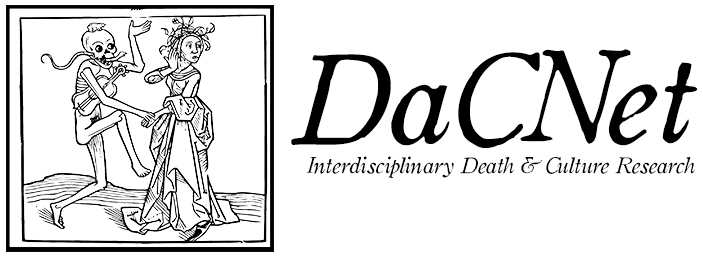
Death & Culture Reading Group
As part of this network that seeks to explore cultural responses to mortality, this interdisciplinary reading group aims to tackle contemporary theory and research into the impact of death and the dead on culture. In each meeting, we will tackle a text or film relating to death and its relationship with contemporary culture.
The group was formed in August of 2017 and aims to meet monthly where possible. It is open to anyone, from any field of research, and readings are provided in digital form.
Suggestions for readings and requests to be added to the reading group mailing list should be sent to j.denham@yorksj.ac.uk
We meet at bimonthly at 17:30 on the first Thursday at the Three Legged Mare (York),
Our previous discussions have included:
2018
During our meetings in 2018, the DaCNet reading group discussed:
Cesare, Nina and Jennifer Branstad, 'Mourning and Memory in the Twittersphere', Mortality 23(1) (2018): pp. 82-97. https://doi.org/10.1080/13576275.2017.1319349
Jones, Kevin, Kenneth Zagacki and Todd Lewis, 'Communication, Liminality, and Hope: The September 11th Missing Person Posters' Communication Studies 58(1) (2007): pp. 105-121. https://doi.org/10.1080/10510970601168780
Parsons, Brian, The Evolution of the British Funeral Industry in the 20th Century: From Undertaker to Funeral Director (Bingley: Emerald Publishing, 2018)
Penfold-Mounce, Ruth, Death, The Dead, and Popular Culture (Bingley: Emerald Publishing, 2018)
Simmel, Georg, The Metropolis and Mental Life.
Thorpe, Charles, Necroculture (New York: Palgrave, 2016)
2017
During our meetings in 2017, the DaCNet reading group discussed:
Bourke, Joanna, Wounding the World: How Military Violence and War-Play Invade our Lives (London: Virago, 2015)
Redmalm, David, 'Pet Grief: When is Non-Human Life Greivable?', The Sociological Review 63(1) (2015): pp. 19-35. https://doi.org/10.1111%2F1467-954X.12226
Stone, Philip and Richard Sharpley, 'Consuming Dark Tourism: A Thanatological Perspective', Annals of Tourism Research 35(2) (2008): pp. 574-595. https://doi.org/10.1016/j.annals.2008.02.003
